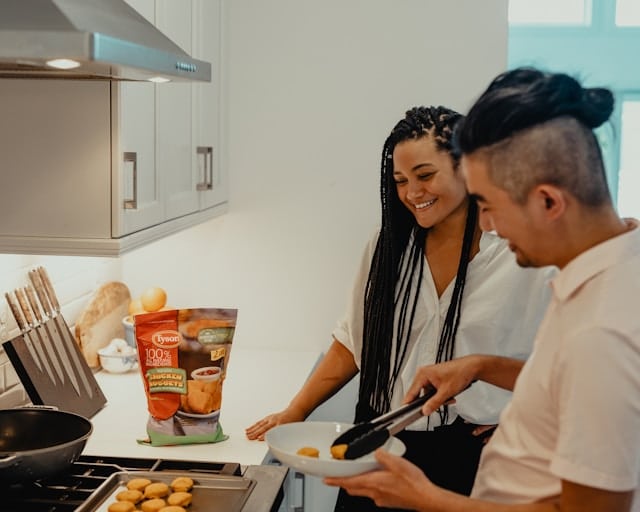When it comes to feeding time, your feline friends’ diet is a crucial factor in their overall health and wellness. The rise in commercial pet food has made mealtime convenient for many pet owners; however, homemade meals can offer a range of benefits, especially for cats with specific dietary needs, such as those suffering from Inflammatory Bowel Disease (IBD).
Let’s delve into the fascinating world of homemade cat food, focusing on how to prepare and administer wholesome, nutritious meals for your beloved pets struggling with IBD.
This might interest you : How to Prepare Your Cat for a Comfortable and Safe Long-Distance Car Ride?
Understanding Your Cat’s IBD
Before we venture into creating homemade meals, let’s understand what IBD is. IBD is a condition that involves chronic inflammation of the cat’s gastrointestinal tract. It can cause discomfort and may require a specialized diet to manage symptoms and promote overall wellbeing.
The food you serve to your cat will significantly impact the management of this disease, which is why you must pay close attention to the ingredients and preparation methods.
This might interest you : What Are the Best Techniques for Introducing a Rescue Greyhound to a New Home?
Raw Vs Cooked: Choosing the Right Approach
Often, many cat owners are torn between feeding their pets raw or cooked homemade meals. Both approaches come with their advantages and potential downsides, so it’s crucial to make an informed decision.
A raw diet for cats typically includes uncooked meat, organ meat, bones, and occasionally fruits and vegetables. Advocates of a raw diet argue it’s more biologically appropriate and offers greater nutritional value. However, a raw diet can raise concerns about bacterial contamination and may not be ideal for cats with IBD, who may have a weakened immune system.
On the other hand, cooked meals are safer in terms of bacterial contamination. When prepared with the right ingredients, they can meet your cat’s nutritional needs without the risk associated with raw food. It’s important to remember that cats are obligate carnivores, meaning they require a diet rich in animal protein. So, cooked meals should still be primarily based around meat.
The Ideal Ingredients for Your Cat’s Homemade Meals
Choosing the right ingredients is paramount when preparing homemade food for your cat with IBD. It’s vital to balance the nutritional content to cater to your pet’s specific needs.
When selecting meat, opt for high-quality sources such as chicken, turkey, or rabbit. Avoid using meats that are high in fat, as they can exacerbate your cat’s IBD symptoms. Organ meats like liver, heart, and kidneys can also be included in moderation, as they are rich in nutrients.
Adding small amounts of cooked vegetables can be beneficial for fiber, but remember, they should never replace meat in your cat’s diet. Avoid using onions and garlic, as they can be toxic to cats.
Water is another essential ingredient to add, especially if your cat isn’t keen on drinking. Dehydration is a common risk for cats with IBD, so incorporating moisture in meals is a smart move.
Step-by-step Guide to Preparing Your Cat’s Homemade Meal
Now that you understand the ingredients, let’s get to the fun part—cooking! Here’s a simple step-by-step guide to help you prepare a nutritious home-cooked meal for your cat with IBD:
- Thoroughly rinse the meat and organ meat you’ve chosen.
- Cut the meat into small, bite-sized pieces for your cat.
- Fill a pot with water and bring it to a boil.
- Place the meat in the boiling water and let it cook for about 10-15 minutes.
- While the meat is cooking, finely chop the vegetables (if using).
- Once the meat is thoroughly cooked, remove it from the heat and let it cool.
- Mix the cooked meat with the chopped vegetables.
Remember, the goal is to create a meal that your cat will enjoy and that will support their health. After cooking, always allow the food to cool down to a safe temperature before serving it to your pet.
Administering Home-cooked Meals to Your Cat
Switching from commercial to homemade meals should be a gradual process to avoid sudden digestive upset. Begin by mixing a small amount of the homemade food with their regular commercial food, gradually increasing the homemade portion over time.
Monitor your pet closely during this period. Watch for any signs of discomfort or refusal to eat. If you notice any adverse reactions, consult your vet immediately.
Also, remember to provide plenty of fresh water for your cat at all times. Even though homemade meals contain moisture, they may still need additional hydration.
Lastly, keep in mind that every cat is unique. What works for one might not work for another. Your vet should always be your first point of consultation when considering dietary changes, particularly when managing a condition like IBD.
As you embark on the journey of homemade feeding, remember, it’s more than just about preparing meals—it’s about taking an active role in your cat’s health and wellbeing.
Monitoring Your Cat’s Health During Dietary Transition
In the process of transitioning your cat from commercial to homemade meals, it is essential to monitor your pet’s health carefully. This change, despite being beneficial in the long run, can initially cause some discomfort to your cat, especially if they are already dealing with IBD.
Be vigilant for any signs of digestive discomfort such as vomiting, diarrhea, or constipation, as well as changes in behavior, such as lethargy or more vocal than usual. These could indicate that your cat is having trouble adjusting to the new diet. If you notice any of these signs, it’s imperative to consult with your vet immediately.
Apart from physical signs, your cat’s appetite can also provide a clue about how well they are adjusting to homemade meals. If your cat seems uninterested in the home-cooked food or refuses to eat it, this could signal that they are not taking well to the new diet. In such cases, your vet may recommend adjustments to the food’s texture or flavor.
Remember, patience is key when transitioning your cat to a new feeding routine. It might take some time for your pet to accept and enjoy the home-cooked meals, but with consistent effort and careful observation, you can ensure that the transition goes smoothly.
##Conclusion: Making the Best Choice for Your Cat
Caring for a cat with IBD can be challenging, but with a few adjustments to their diet, you can make a significant difference in their quality of life. Switching to homemade meals may seem daunting at first, but the benefits it brings to your cat’s health make it a worthwhile effort.
Although homemade cat food preparation requires a bit of work and time, it ensures that you have complete control over the ingredients and nutritional content of your cat’s meals. This is particularly beneficial for cats with IBD, as their diet requires careful regulation.
Remember that a gradual transition from commercial to homemade meals is crucial. Monitor your cat’s health and appetite closely during this period and be ready to consult with your vet if any concerns arise.
Feeding a homemade diet should not replace regular vet visits. Regular check-ups will help monitor your cat’s health and adjust the diet as needed.
In conclusion, preparing and administering home-cooked meals for your cats with IBD is not just about meeting their nutritional needs. More than that, it is a labor of love—a testament to the lengths you are willing to go to ensure their optimal health and wellbeing. By making this switch, you are taking an active role in managing your cat’s IBD, contributing to their overall health, and, ultimately, enhancing their quality of life.






